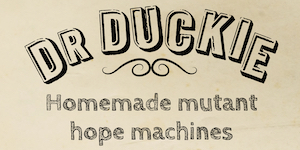
Derek Jarman in The Garden (1990)
This article appears in the Winter 2021-2022 issue of Sight & Sound and is reproduced here with permission.
Derek Jarman: new exhibitions show how timely his art and activism still is
Two exhibitions and a film season spotlight other important aspects of the filmmaker’s driving imagination: his artwork, activism and love of nature. By Ben Walters
“Derek could tap into the establishment but he remained an outsider,” Jon Savage says of Derek Jarman. “His work expressed a mix of powerlessness and anger that, because it’s proper art, has travelled through time. He was a beacon.”
That beacon arguably shines more brightly now than it has since Derek Jarman’s death in 1994. Overlapping with what would have been his 80th birthday, in January 2022, exhibitions of Jarman’s work are opening in Manchester and Southampton, following others in London, Paris and Berlin. His rising profile might have to do with generational cycles of appreciation and rediscovery, as well as the urgent resonances between Jarman’s interests and those of today.
This includes queer resistance to rising authoritarianism and environmental crisis and a bracing disregard for formal boundaries: best known in his lifetime as a filmmaker and activist, his achievements in visual art, design, writing and pop videos are increasingly widely recognised. Also at play are the reissue of Jarman’s writings and changes in the status of his estate. Following the passing of his partner, Keith Collins, in 2018, a high-profile crowdfunding cam- paign secured Jarman’s archives and final home, Prospect Cottage, at Dungeness on the Kent coast, the garden of which is one of his masterpieces.
‘Derek Jarman: Protest!’, at Manchester Art Gallery, is a career retrospective, curated by Savage in collaboration with the gallery’s curator of art and design, Fiona Corridan, and the Irish Museum of Modern Art in Dublin, where it was mounted in 2019. A sweeping journey across art school and the underground, punk and pop, cinema and street protest, it includes paintings, assemblages, set designs, props and videos, tracing Jarman’s links to David Hockney, Ken Russell, Sex Pistols, Pet Shop Boys, Tilda Swinton, Outrage! and more.

Derek Jarman, I.N.R.I. (1988)
“He was a protean figure,” Savage notes. “He kept changing and shifting right to the end of his life.” Where the Dublin version of the show emphasised Jarman’s fine art context, in Manchester it leans into his artistic-activist collaborations, both around the punk era and in the years following his diagnosis with HIV. “We’re including a lot of Jubilee materials,” says Savage. “It was a very important film for Derek because it tied him into the punk/post-punk generation – he was already into his thirties – and into younger filmmakers. And then, by the late 80s/early 90s, he’d found a new generation of activists. He was made a queer saint [by drag collective the Sisters of Perpetual Indulgence].”
Protest! will be accompanied by a full retrospective, screening at the nearby arts venue HOME, of Jarman’s features alongside a selection of other works and a new film by Mark Cousins. There are plans for a symposium with the Queer British Art research group, and for the Sisters of Perpetual Indulgence to canonise the legendary queer performer, artist and Manchester resident David Hoyle.
Other projects reanimate Jarman’s passion for queer intergenerationality: Jez Dolan will work with younger LGBTQ+ artists to develop a body of work across the exhibition period while the LGBT Foundation’s Pride in Ageing initiative will facilitate the creation of a permanent new ‘pocket park’, reflecting the aesthetic and environmental concerns Jarman explored at Dungeness.
Such issues are at the very heart of ‘Derek Jarman: Modern Nature’ at the University of Southampton’s John Hansard Gallery. Curated by the writer Philip Hoare, it focuses on Jarman’s enduring love for plants, bodies and the environment, setting his works, including early landscape paintings, against pieces by other artists. These include neo-romantics such as Graham Sutherland and the surrealists Eileen Agar and John Banting – “the presiding artistic gods of Jarman’s youth,” Hoare notes, whose work speaks to the “apocalyptic conditions of London after the Blitz” – and young artists influenced by Jarman, such as Richard Porter and Sarah Wood, who have collaborated with cottage gardener Jonny Bruce.
“The garden has strangely become Derek’s legacy,” Hoare says, “partly because a garden is a very middle-class thing, so he was perhaps forgiven his sins in some quarters.” But Jarman’s generous spirit and somewhat saintly, avuncular aura shouldn’t obscure his radical queer sensibility.
Prospect Cottage, Hoare notes, was “this lightning conductor of a place, a little hut of subversion dropped down in this desert on the edge of England. The queerness of Derek’s vision was not limited to LGBTQ+ matters. It’s antipathetic to the status quo and very inclusive. There’s high art and philosophy but it’s also vernacular and tangible. It’s folk art, in a way, which is very English but also quite un-nationalistic. He wants to save the English from being English. Dungeness is receiving refugees now. Derek would have had a lot to say about that. It’s a pity he’s not still in that little hut.”
‘Derek Jarman: Protest!’ is at Manchester Art Gallery, until 10 April 2022. HOME Manchester’s Jarman retrospective runs from 30 Jan to mid-March 2022. ‘Derek Jarman’s Modern Nature’ is at John Hansard Gallery, Southampton, until 26 February 2022 .
Read about my visit to Prospect Cottage for Sight & Sound here.

